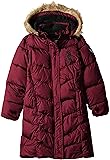All Categories
*Price and Stocks may change without prior notice
*Packaging of actual item may differ from photo shown
- Electrical items MAY be 110 volts.
- 7 Day Return Policy
- All products are genuine and original








About What Was The Bombing Of
Product Description Hiroshima is where the first atomic bomb was dropped. Now readers will learn the reasons why and what it's meant for the world ever since. By August 1945, World War II was over in Europe, but the fighting continued between American forces and the Japanese, who were losing but determined to fight till the bitter end. And so it fell to a new president--Harry S. Truman--to make the fateful decision to drop two atomic bombs--one on Hiroshima and one on Nagasaki--and bring the war to rapid close. Now, even seventy years later, can anyone know if this was the right choice? In a thoughtful account of these history-changing events, Jess Brallier explains the leadup to the bombing, what the terrible results of it were, and how the threat of atomic war has colored world events since. About the Author Jess Brallier is the author of numerous books, including Bouncing Science and Who Was Albert Einstein? He lives in New York. Excerpt. © Reprinted by permission. All rights reserved. What Was the Bombing of Hiroshima? In the early morning on August 6, 1945, an American B-29 bomber flew toward Japan. The plane was named the Enola Gay after the mother of its pilot, Colonel Paul Tibbets. In its cargo was a weapon unlike any the world had known. As the bomber flew closer to its target, Tibbets revealed to his crew what the secret weapon was. Their plane was carrying the first atomic bomb that would ever be used in war. The bomb was nicknamed “Little Boy.” And it was going to be dropped on the Japanese city of Hiroshima. Below, the 350,000 citizens of Hiroshima were beginning their day. Eating breakfast, walking to school, reading a newspaper, arriving at work. They had no idea what was about to happen. At 8:15, the Enola Gay’s bomb bay door opened, and Little Boy was dropped. Less than a minute later, the atomic bomb exploded. Suddenly, for miles in all directions, fires ignited. Metal melted, and sixty thousand buildings were destroyed. About seventy thousand people died instantly or were fatally injured. Eventually, over two hundred thousand people would die from the bomb. For the first time ever, an atomic weapon had been let loose. Its ability to kill and destroy was nearly beyond imagination. Who decided to drop it? And why? Was the decision right or wrong? That debate continues, even as you read this. What cannot be debated, however, is that on August 6, 1945, the world changed forever. Chapter 1: Japan Before the late 1800s, Japan had little contact with Europe or the Americas. Emperors had controlled Japan from about 660 until the 1100s. Then military rulers, called shoguns, took over. The shoguns commanded samurai, who were noble soldiers similar to European knights. Ranked below the samurai were foot soldiers, called ashigaru. The samurai dressed in armor held together by silk cords. They followed a code of conduct known as Bushido, or “the way of the warrior.” Samurai were to be honest, loyal, and above all, brave. No samurai could bear to live in dishonor. In the 1500s, European traders first sailed to Japan. They wanted to buy and sell goods with the Japanese. Shoguns, fearing change and loss of their own power, banned almost all outsiders in 1641. After that, Japan remained largely cut off from the Western world until 1853. That’s when the US Navy commodore Matthew Perry sailed into Tokyo, Japan’s biggest city. Commodore Perry forced the shoguns to allow trade with the United States. From then on, the country began to blend Western ways with its own values. And emperors again replaced the shoguns. But the emperor also served as Japan’s religious leader. His ministers controlled the government. Japan became a military power, and it set up big businesses, moving people from farms to factories. However, Japan lacked many natural resources, such as oil and rubber. It needed them to make many products. So Japan depended on buying these things fr




 (1)
(1)













